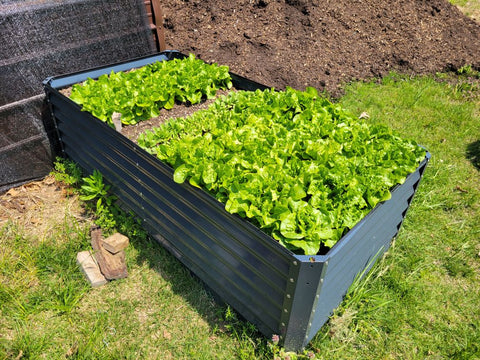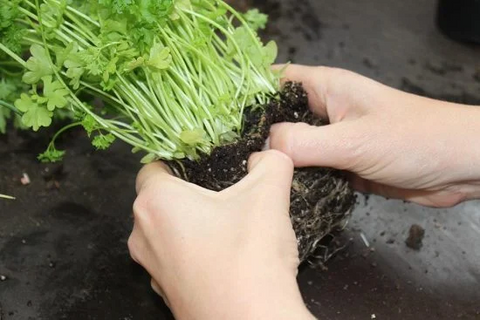As winter approaches, greenhouse enthusiasts face the challenge of safeguarding their precious plants from the cold, ensuring a thriving oasis even in the chilliest months. Winterizing your greenhouse is a crucial step in maintaining a conducive environment for plant growth and protection. In this comprehensive guide, we'll explore the essential steps and considerations for winterizing your greenhouse, allowing you to create an optimal space for your plants to flourish during the winter season.The following content also has some reference value for raised garden beds.

1. Assessing Your Greenhouse Structure
Checking for Leaks and Drafts:
Before winter sets in, thoroughly inspect your greenhouse for any leaks or drafts. Pay close attention to seams, joints, and glazing to identify potential areas where cold air might infiltrate. Sealing these gaps is helpful to maintain a consistent temperature.
Reinforcing Weak Points:
Evaluate the structural integrity of your greenhouse. Reinforce weak points, such as aging frames or damaged panels, to ensure they can withstand the weight of snow and resist strong winds. Addressing structural issues before winter arrives prevents potential damage.
Cleaning and Clearing Debris:
Remove any accumulated debris, such as fallen leaves or twigs, from the greenhouse roof and gutters. A clean structure allows natural light to penetrate more efficiently and reduces the risk of snow buildup that could stress the frame.
2. Insulating Your Greenhouse
Choosing the Right Insulation Materials:
Select appropriate insulation materials to retain heat within the greenhouse. Bubble wrap, polyethylene sheets, or thermal blankets are effective options. Install them on the interior walls and roof to create a thermal barrier.
Insulating the Floor:
Insulate the greenhouse floor to prevent the cold from permeating upward. Consider adding a layer of straw or hay on the ground or placing insulating panels beneath the soil to retain heat and protect the roots of your plants.
Utilizing Thermal Mass:
Thermal mass materials, such as water barrels or stone, absorb heat during the day and release it at night, helping to regulate temperature fluctuations. Strategically place these thermal mass elements to enhance heat retention.
3. Heating Solutions for Your Greenhouse
Choosing the Right Heating System:
Select a heating system that suits the size and layout of your greenhouse. Options include electric heaters, propane heaters, or radiant floor heating systems. Assess the energy efficiency and capacity to ensure adequate heat distribution.
Installing Ventilation:
Proper ventilation is essential to prevent humidity buildup and disease. Install exhaust fans or louvers to allow the release of excess moisture while maintaining a well-ventilated environment. Balanced ventilation helps regulate temperature and humidity levels.
Thermostats and Temperature Monitoring:
Install thermostats to control heating systems and maintain a consistent temperature. Additionally, invest in temperature monitoring devices to receive real-time alerts in case of unexpected temperature fluctuations.

4. Protecting Plants from Frost
Choosing Frost-Resistant Plants:
Prioritize plants that are more resistant to frost when planning your winter greenhouse garden. Research and select varieties that can thrive in colder temperatures without requiring extensive protection.
Utilizing Frost Cloth and Row Covers:
For more delicate plants, use frost cloth or row covers to provide an extra layer of protection against frost. These breathable fabrics shield plants from extreme cold while allowing sunlight to filter through.
Elevating Plants Above Cold Surfaces:
Lift potted plants off the ground to prevent direct contact with cold surfaces. Placing them on benches or using pallets helps minimize the risk of roots freezing during exceptionally cold nights.
5. Watering and Humidity Management
Adjusting Watering Practices:
Modify your watering schedule during the winter months. Water early in the day to allow sufficient time for the soil to absorb moisture before temperatures drop at night. Avoid watering late in the evening to prevent excess moisture that can lead to fungal issues.
Humidity Control:
Manage humidity levels within the greenhouse to prevent the development of fungal diseases. Proper ventilation and spacing between plants contribute to humidity control. Consider using a dehumidifier if necessary.
Avoiding Overwatering:
Overwatering is a common issue in winter greenhouses. Plants have reduced water uptake during lower light conditions, and excess moisture in the soil can lead to root rot. Adjust how often you water according to the specific needs of your plants.
6. Preparing for Extreme Weather Events
Snow Load Considerations:
Greenhouses should be designed to withstand the weight of accumulated snow. Regularly remove snow buildup from the roof using a soft broom or rake to prevent structural damage.
Securing Greenhouse Coverings:
In areas prone to strong winds, ensure that your greenhouse coverings are securely fastened. Reinforce the coverings with additional ties or straps to prevent them from being dislodged during storms.
Emergency Preparedness:
Have an emergency plan in place in case of power outages or extreme weather events. Consider backup power sources, such as generators, and have an emergency kit with essentials like extra blankets, heaters, and lighting.
7. Monitoring and Maintenance
Regular Checkups:
Conduct regular checkups on your greenhouse throughout the winter. Inspect for signs of damage, monitor temperature levels, and address any issues promptly to ensure a healthy and thriving environment for your plants.
Cleaning Greenhouse Glazing:
Clean greenhouse glazing periodically to maintain optimal light transmission. Dirty or clouded panels can reduce sunlight exposure, hindering the growth of your plants.
Pruning and Maintenance:
Prune any dead or damaged plant material to promote air circulation and reduce the risk of disease. Regular maintenance tasks, such as cleaning, lubricating hinges, and checking insulation, contribute to the overall efficiency of your greenhouse.

Conclusion
Winterizing your greenhouse is a proactive and essential step in providing a nurturing environment for your plants during the colder months. By carefully assessing your greenhouse structure, implementing effective insulation and heating solutions, protecting plants from frost, managing water and humidity, preparing for extreme weather events, and conducting regular monitoring and maintenance, you can create a resilient and thriving winter greenhouse. As the winter landscape unfolds, your greenhouse can remain a sanctuary of life and growth, offering a glimpse of spring even in the midst of the cold season. Embrace the challenge of winterizing, and let your greenhouse become a haven for flourishing plants year-round.









